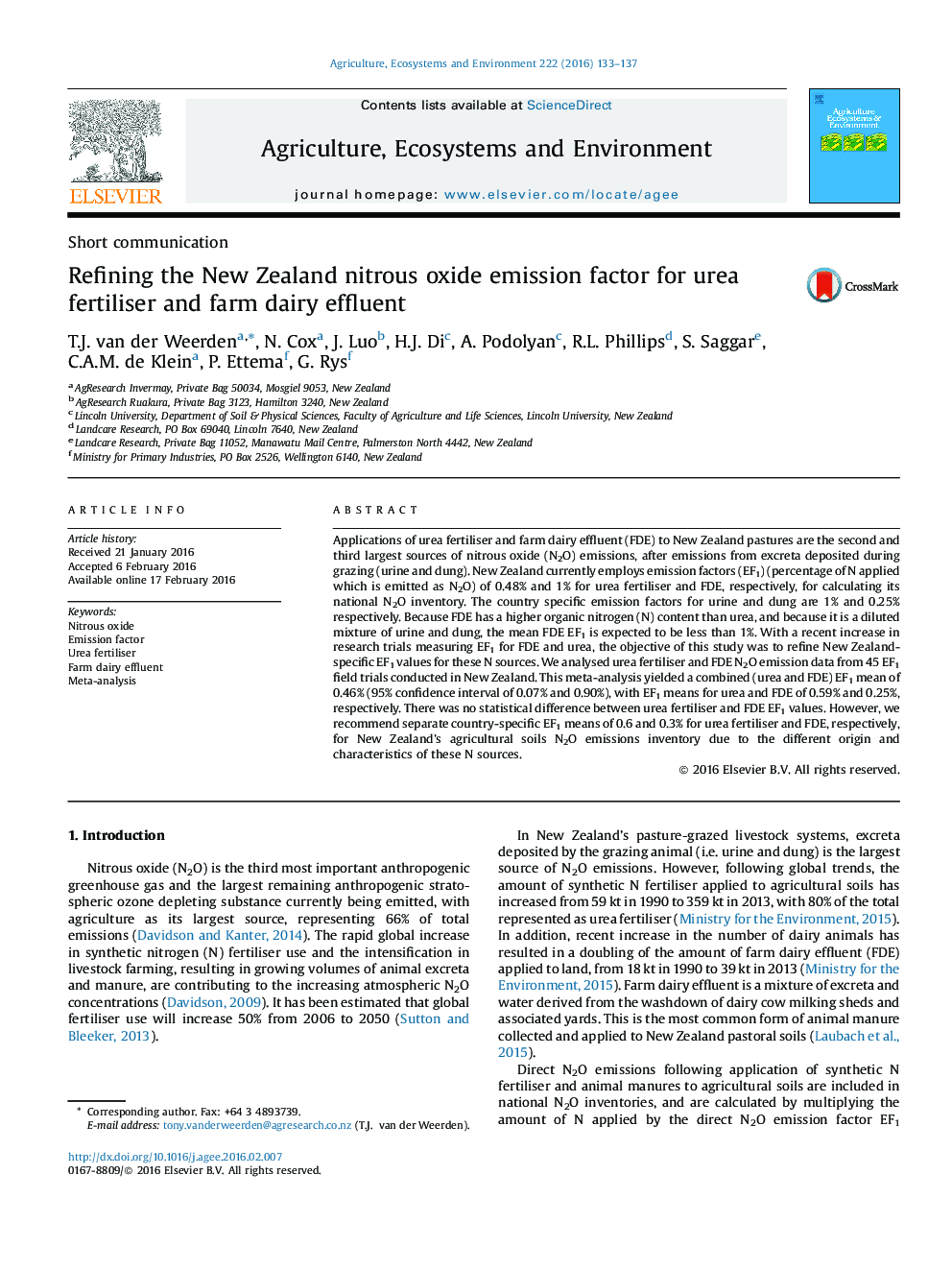| کد مقاله | کد نشریه | سال انتشار | مقاله انگلیسی | نسخه تمام متن |
|---|---|---|---|---|
| 2413586 | 1552030 | 2016 | 5 صفحه PDF | دانلود رایگان |
• An increase in N2O data from urea fertiliser and FDE justifies a refinement of EF1.
• An analysis of NZ urea fertiliser and FDE data produced a mean EF1 value of 0.46%.
• Separate NZ-specific EF1 values were 0.3 and 0.6% for FDE and urea, respectively.
Applications of urea fertiliser and farm dairy effluent (FDE) to New Zealand pastures are the second and third largest sources of nitrous oxide (N2O) emissions, after emissions from excreta deposited during grazing (urine and dung). New Zealand currently employs emission factors (EF1) (percentage of N applied which is emitted as N2O) of 0.48% and 1% for urea fertiliser and FDE, respectively, for calculating its national N2O inventory. The country specific emission factors for urine and dung are 1% and 0.25% respectively. Because FDE has a higher organic nitrogen (N) content than urea, and because it is a diluted mixture of urine and dung, the mean FDE EF1 is expected to be less than 1%. With a recent increase in research trials measuring EF1 for FDE and urea, the objective of this study was to refine New Zealand-specific EF1 values for these N sources. We analysed urea fertiliser and FDE N2O emission data from 45 EF1 field trials conducted in New Zealand. This meta-analysis yielded a combined (urea and FDE) EF1 mean of 0.46% (95% confidence interval of 0.07% and 0.90%), with EF1 means for urea and FDE of 0.59% and 0.25%, respectively. There was no statistical difference between urea fertiliser and FDE EF1 values. However, we recommend separate country-specific EF1 means of 0.6 and 0.3% for urea fertiliser and FDE, respectively, for New Zealand’s agricultural soils N2O emissions inventory due to the different origin and characteristics of these N sources.
Journal: Agriculture, Ecosystems & Environment - Volume 222, 15 April 2016, Pages 133–137
